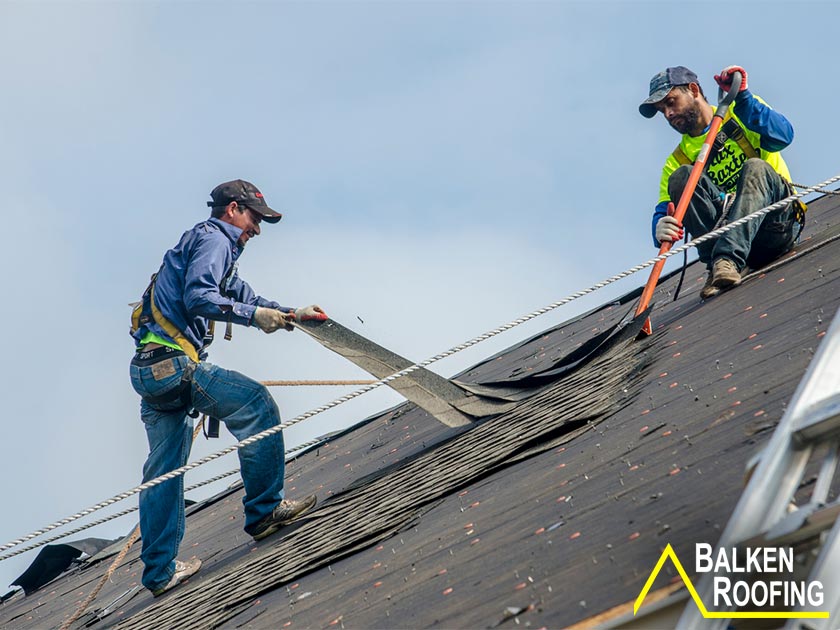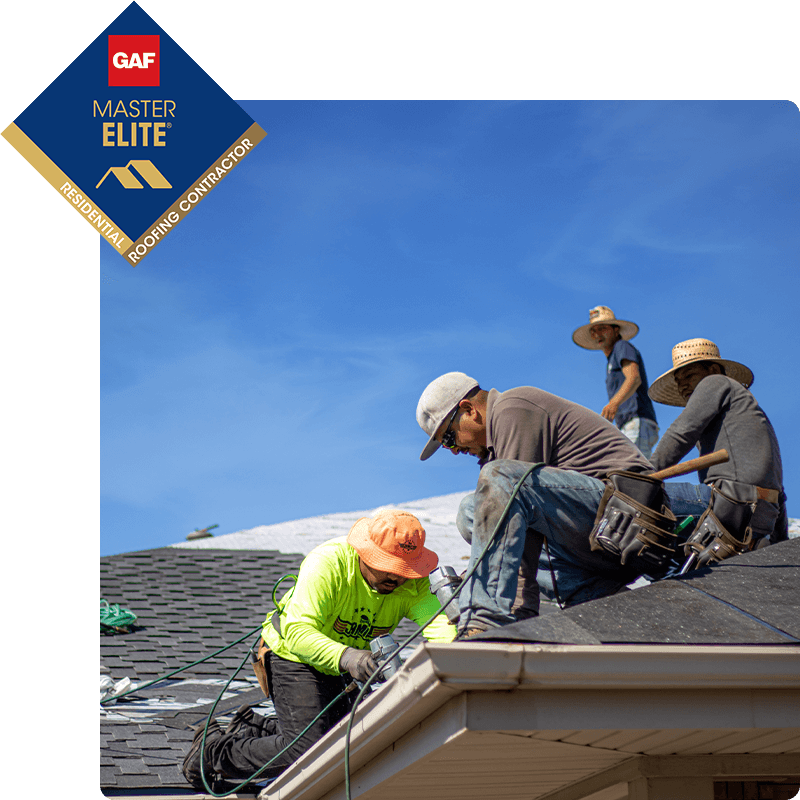Roof Replacement Novi Cost vs. Long-Term Savings: A Financial Breakdown
Roof Replacement Novi Cost vs. Long-Term Savings: A Financial Breakdown
Blog Article
Exactly How Weather Problems Can Effect Your Roofing Durability
Your roofing encounters constant challenges from the weather condition, and it's vital to recognize exactly how these conditions can reduce its life expectancy. Each component plays a role in your roofing system's sturdiness, however exactly how can you effectively prepare for these threats?
The Impacts of UV Rays on Roofing Products
When your roof is revealed to sunlight, those hazardous rays can cause substantial damages over time. This deterioration weakens your roofing and makes it less effective at shielding your home.
Routine assessments additionally help capture early indicators of damage, allowing you to deal with issues prior to they rise. By remaining aggressive regarding UV direct exposure, you'll extend the life of your roof and improve your home's general durability.
Just How Excessive Rain Can Result In Roof Damages
While UV rays can deteriorate your roof, excessive rains positions an additional substantial risk to its honesty. When heavy rainfalls occur, water can pool on your roof covering, resulting in prospective leaks and structural damages with time. If your roof covering materials aren't created to handle long term exposure to moisture, they can wear away faster than expected.
Blocked rain gutters can worsen these concerns, creating water to overflow and seep right into your home. You could notice stains on your ceilings or wall surfaces, signifying that water is locating its means inside. Additionally, standing water can promote mold and mildew growth, which not only harms your roofing system yet can likewise affect your interior air top quality.
To safeguard your roof covering, confirm your drain systems are clear and operating correctly. Normal inspections can aid you recognize weak places prior to they transform right into expensive repair work, keeping your roof healthy also during hefty rainfall.
The Effect of Snow and Ice Build-up
When snow and ice accumulate on your roof covering, you could not realize the stress and anxiety it puts on the framework. That added weight can cause major concerns like roof sagging or perhaps collapse. And also, ice dam development can catch water, creating leaks and further damages to your home.
Snow Tons Stress
As winter blankets your home in snow, the weight of accumulated ice and snow can put considerable stress on your roof covering. When snow develops, it can go beyond the load-bearing ability of your roofing products, resulting in possible sagging or even collapse. You could not realize just how swiftly snow can gather, particularly throughout heavy storms, so it's vital to watch on the weight your roof covering is supporting. On a regular basis clearing snow can help minimize this stress and anxiety, decreasing the risk of long-lasting damages. Furthermore, comprehending your roof's framework and its snow tons rating can inform you concerning when to act. Bear in mind, avoidance is vital to keeping your roof covering's integrity and longevity throughout the winter season months.
Ice Dam Formation
Ice dam development can end up being a significant problem during wintertime, specifically when snow builds up on your roofing system and temperature levels change. When warmth gets away from your home, it thaws the snow on your roof covering, triggering water to flow down. As this water gets to the cooler eaves, it freezes, developing a dam that protects against further drainage. Over time, this trapped water can seep under roof shingles, causing leakages and considerable damage to your roof structure. To avoid ice dams, see to it your attic is appropriately shielded and aerated. You must additionally on a regular basis get rid of snow build-up from your roof covering. By taking these precautions, you'll help extend your roofing system's life expectancy and avoid expensive repairs triggered by ice dam concerns.
Temperature level Variations and Their Duty in Roof Covering Degeneration
Temperature level fluctuations can seriously impact your roofing system's life expectancy. As products broaden and contract with warm and chilly, they end up being a lot more prone to fractures and damage. Additionally, freeze-thaw cycles can exacerbate these issues, resulting in more deterioration in time.
Thermal Growth Impacts
When temperatures fluctuate, your roofing system can go through significant thermal development and tightening, which might cause material tension and damage gradually. As the sun heats your roofing throughout the day, products broaden; when temperature levels go down in the evening, they acquire. This consistent cycle can create vulnerable points, specifically at joints and seams. You may observe splits, warping, or loose roof shingles because of this. These problems can lead to leakages and costly fixings if left unattended. To minimize damage, think about using roof materials created to endure these temperature level adjustments. Normal inspections can additionally aid you capture very early indications of wear, guaranteeing your roof covering continues to be efficient and resilient in securing your home.
Freeze-Thaw Cycles
As winter embed in, the freeze-thaw cycles can damage your roof covering. Moisture from rain or snow seeps into crevices and fractures when temperatures dip. As it freezes, it broadens, placing enormous pressure on your roof products. This cycle repeats as temperature levels drop and rise, slowly causing wear and tear. You might discover roof shingles fracturing, curling, or perhaps disintegrating over time.
Ignoring these issues can cause more considerable Get More Information troubles, including leaks and architectural damages. To secure your roof covering, it's crucial to examine it consistently, especially after severe weather. Resolving minor concerns promptly can aid extend the life of your roof, guaranteeing it endures the harsh results of freeze-thaw cycles throughout wintertime.
Humidity Degrees and Their Impact on Roofing System Integrity
While lots of people concentrate on temperature variations, humidity degrees play a vital function in establishing the honesty of your roof. High humidity can develop a wet atmosphere that motivates mold, algae, and mold development, all of which can compromise roof covering materials over time. If your roof covering's air flow isn't appropriate, wetness can get entraped, bring about wood rot and other architectural concerns.
Alternatively, low humidity can cause dry problems, creating products like tiles to come to be breakable and fracture. This brittleness can make them a lot more prone to damage from other weather aspects.
To preserve your roof covering's stability, it is crucial to keep an eye on humidity levels and guarantee correct air flow. Routine examinations and upkeep can help determine prospective problems prior to they come to be significant problems. Keeping your roofing system in excellent problem suggests being aggressive about humidity impacts, inevitably extending its life expectancy and shielding your home.
Wind Damages: A Silent Danger to Your Roof Covering
Humidity isn't the only weather variable to consider; wind damages can calmly threaten your roof covering's stability. Solid winds can lift tiles, loosen blinking, and even detach whole sections of your roof covering. You might not observe these issues right away, yet gradually, they can lead to substantial leaks and architectural damages.
If you live in a location prone to high winds, it's vital to keep an eye on your roof covering after storms. Check for any missing out on or harmed shingles and inspect the edges where the roof satisfies other surface areas. Roofing Company Near Me. Pay focus to any type of debris that may have built up, as this can trap dampness and worsen damages
Ignoring these indications could save you time currently, but it can cost you more in the future. A proactive technique to wind damages can help ensure your roof covering stays solid and protected, prolonging its lifespan and shielding your home.
Preparing Your Roof Covering for Extreme Weather Occasions
When preparing your roof for severe weather events, it's critical to evaluate its current condition and make required upgrades. Start by checking for missing or damaged roof shingles, as these can bring about leakages during heavy rainfall or snow. Replace any kind of compromised materials to assure a strong foundation.
Following, inspect the flashing around skylights, smokeshafts, and vents. Effectively sealed flashing protects against water from leaking in, which can cause substantial damage.
Consider enhancing your roofing system's structure, particularly if your area is vulnerable to high winds or heavy snowfall. Mounting impact-resistant roof shingles can include an additional layer of protection.
Lastly, clear gutters and downspouts to advertise proper water drainage. Blocked gutters can cause ice dams or roof leakages. By taking these proactive actions, you'll help prolong your roof's life-span and reduce potential damages throughout extreme climate events.

Regularly Asked Inquiries
Exactly how Typically Should I Check My Roof Covering for Climate Damage?

Can I Fix Roof Covering Damage Triggered by Climate Myself?
Yes, you can fix roof damage brought on by climate yourself if you have the right tools and abilities. Simply make sure you prioritize safety and security, examine the damage thoroughly, and follow correct fixing strategies to prevent future issues.
What Roof Covering Products Are Finest for Extreme Climate?
For extreme weather, think about steel, slate, or impact-resistant shingles. These products endure hefty winds, hailstorm, and snow far better than others. You'll guarantee your roof covering lasts much longer, protecting your home from rough elements successfully.
How Does Environment Change Affect Roof Long Life?
Climate modification increases wear on your roof, triggering materials to break down faster. Raised temperatures and extreme tornados can result in even more regular repairs. You'll need to contemplate durable alternatives to ensure your roofing lasts read this longer.
Should I Take Into Consideration a Roof Service Warranty for Weather-Related Issues?
Yes, you must certainly consider a roof covering guarantee for weather-related problems. It protects you versus unanticipated damage, guaranteeing your financial investment stays protected. Plus, it gives tranquility of mind during unpredictable climate condition.
How Extreme Rainfall Can Lead to Roof Covering Damage
When heavy rains take place, water can pool on your roof covering, leading to prospective leaks and architectural damage over time.Humidity isn't the only weather variable to consider; wind damage can calmly threaten your roof covering's stability. By taking these proactive actions, you'll help expand your roofing system's life-span and minimize potential damages during extreme climate occasions.
Can I Fix Roofing System Damages Created by Weather Myself?
Report this page